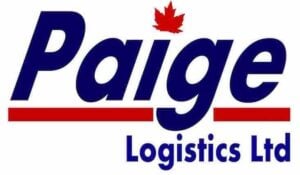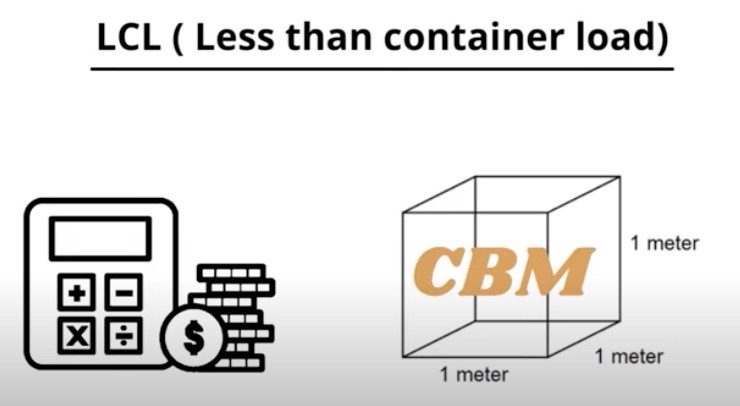When is it appropriate for
LCL shipping?
Understanding Less-than-container load (LCL) Shipping
LCL Transport
LCL (Less than Container Load) is a worldwide shipping sea freight forwarding method used to describe shipments that are too small to fill an entire container, and is usually cheaper than FCL since the cost of shipping a full container is shared.
The main advantages of an LCL are that the buyer only pays for the space they use, that it provides low-cost maritime transportation to small businesses, and that it is charged per cubic meter (or per 1,000 kg, whichever is larger).
The main disadvantages of LCL freight shipping, on the other hand, include the ocean freight cost being per CBM and typically higher than the total cost of a full container, the container being flagged for a customs examination, and LCL shipments taking a few more days in transit than FCL due to the deconsolidation process.
Be it LCL from China or elsewhere, when selecting an agreement, buyers should consider the following factors: volume, gross weight, product type, route duration, and shipment rate.
LCL Pricing
How Much Does LCL Shipping Cost?
A typical cargo vessel can transport 3,000 containers. That equates to nearly 200,000 CBM of cargo!
Because purchasers are expected to ship in bulk, a minimum price is required when shipping under an LCL arrangement.
The cost of an LCL shipment is determined by the amount of space or volume consumed by the shipment, which must be at least 1 CBM in a shared shipping container.
The charges are computed as one CBM if the total volume of the cargo is less than the minimum. Even if your goods require significantly less room than the minimum requirement, you will be charged for the minimum volume.
When compared to sea freight, air freight prices are based on gross weight or volume weight, whichever is greater. A 0.8 CBM shipment with a gross weight of 50kg will have a volume weight of 160kg when sent using Air express. The cost of LCL shipping is determined by the ocean freight minimum of 1 CBM.
Freight logistics companies use different terms for some of their line item charges, but the amounts they charge are usually international standards. Other fees are involved in an LCL shipment, in addition to the cost of sea freight paid to the shipping line for transporting the goods from point A to point B.
These fees cover various freight logistics services such as chassis fees, which are shared among consignments in the same container. Warehousing charges, which are usually added for less than container shipments because the container needs to be transferred to a warehouse to be sorted out based on the consignments, as well as other specific handling fees, are also common.
Depending on the route, the total cost per CBM for ocean freight from China to Canada can range between $25 and $140. Rates for LCL freight typically change monthly, so it is critical to verify the accuracy of the quoted rates provided by your freight forwarder before arranging the shipment.
Find out when you should be using LCL for shipping and why it might be the best choice for your business!
What is LCL? How does LCL shipping work?? fcl vs lcl shipping….
LCL (Less than Container Load) shipping is an ocean freight method used to describe shipments that are too small to fill an entire container.
When the cargo volume does not entirely fill a container. The other alternative is LCL shipment, which is usually less expensive than FCL because the cost of shipping a full container is divided.
It is important to contact a reputable freight forwarder or 3rd party logistics company to obtain a few quotes when comparing CBM cost between an LCL and an FCL shipment.
What Are the Advantages of an LCL Shipment? Is LCL or FCL cheaper??
Since the container is shared with other shipments, the key benefit of LCL shipping is that the buyer only pays for the space they actually need.
This choice enables smaller companies to take benefit of China to Canada ocean shipping‘s low cost without obligating them to ship in bulk.
When travel time is not a concern, LCL which is charged per cubic meter (or per 1,000 lb, whichever is higher), is the most cost-effective alternative for sending smaller but heavier packages.
What Are the Disadvantages of an LCL Shipment?
Although less expensive than FCL cargo, the ocean freight cost of an LCL shipment is determined per CBM and is frequently larger than the overall cost of a full container.
LCL may be more expensive than purchasing a whole container because the consumer is only acquiring a fraction of the container’s total space.
Furthermore, because of the range of products included within it, the container is more likely to be detected for a customs check.
In addition, because of the handling needed in the deconsolidation process, LCL shipments can be mixed up or misplaced with other shipments.
LCL shipments take a few days longer to arrive than FCL shipments as a result of this deconsolidation procedure.
China to Canada ocean freight is known to take more time in transit than air freight, thus, shipments that are time-sensitive should be carefully planned.
When Is It Best to Use an LCL Agreement?
It’s useful to know when the optimal time is to ship via LCL.
When choosing an LCL agreement, purchasers should examine the following factors: volume, gross weight, product type, route time, and shipment pricing.
If the volume of the goods is between 1 and 18 CBM and the gross weight of the shipment is more than 150kg during peak season and 200kg during off-peak season, an LCL agreement should be considered.
Furthermore, because air shipping is the most popular way for smaller shipments, LCL is an excellent alternative to air freight.
What Are the Benefits and Drawbacks of Using LCL Shipping?
The key benefits of an LCL shipment include the buyer only paying for the space they use, providing low-cost ocean transportation to small firms, and being charged rates per cubic meter (or per 1,000 lb, whichever is greater).
The main disadvantages of an LCL shipment include the ocean freight cost being per CBM and typically higher than the total cost of a full container, the container being flagged for a customs examination, and LCL shipments taking some more days in transit than FCL due to the deconsolidation process.
Learn how to find a top shipping logistics company be it China to Canada shipping and connecting onward shipping freight to California. Save-on shipping to USA from Canada on freight forwarding with shipping Incoterms and DAP (delivery at place) Incoterms arrangement.
Stuck for finding the best freight forwarder China to Canada?
Shipping with Paige Logistics! Offering extended cross border shipping Canada to California.
2023 Global Leader In Shipping
Freight Carriers Association of a Canada
Ocean Freight Services China to Canada
International Fulfillment and Logistics

Author & Chief Executive Officer at Paige Logistics Ltd. → Experienced Operations Manager with a demonstrated history of working in the Freight Shipping, Trucking and the Railroad Industry.


